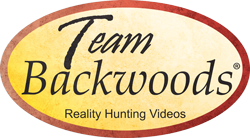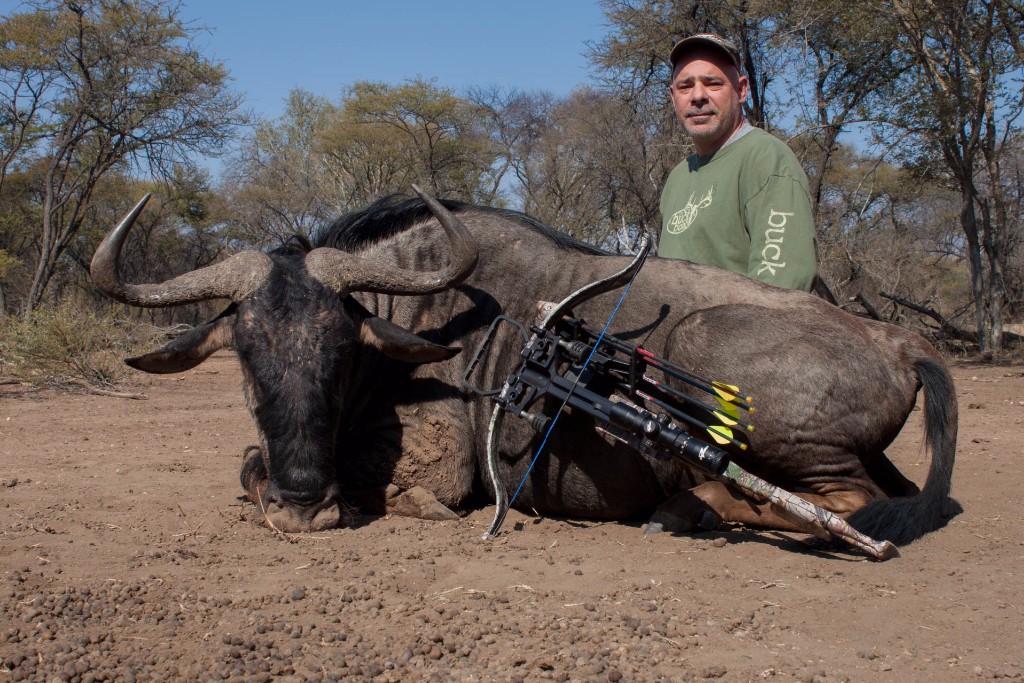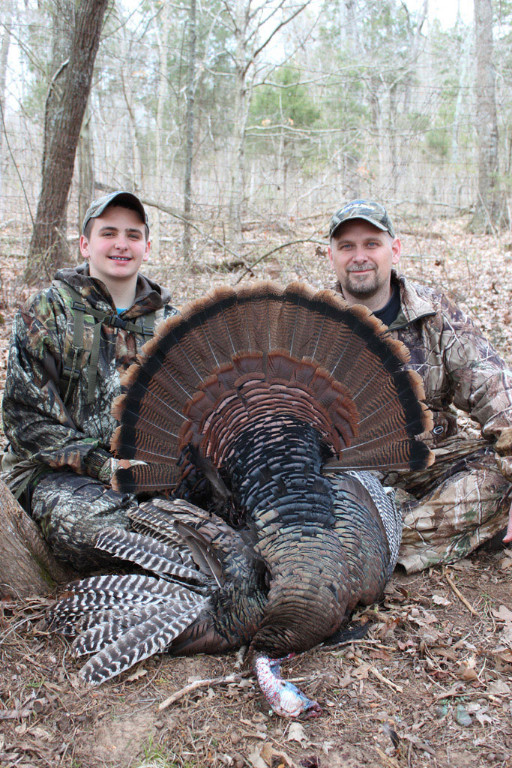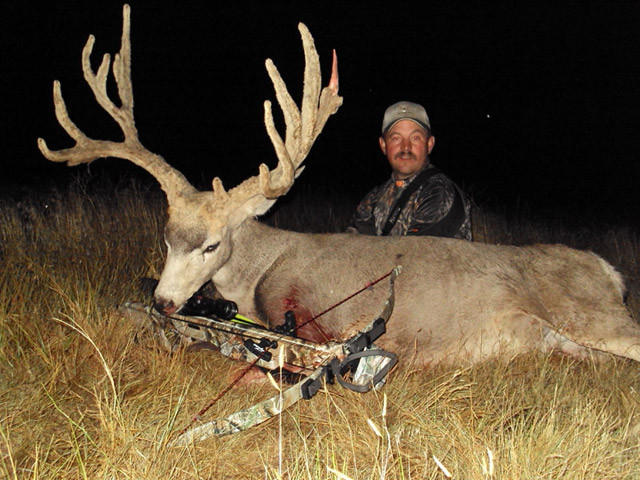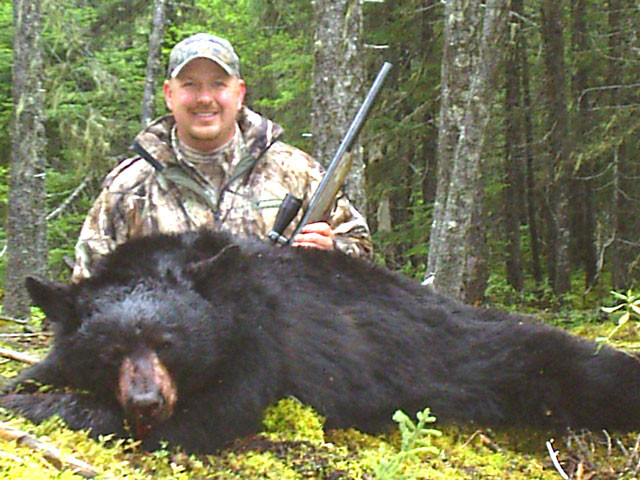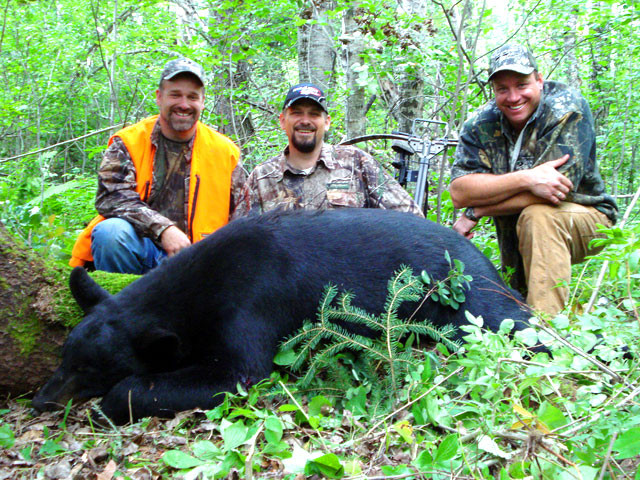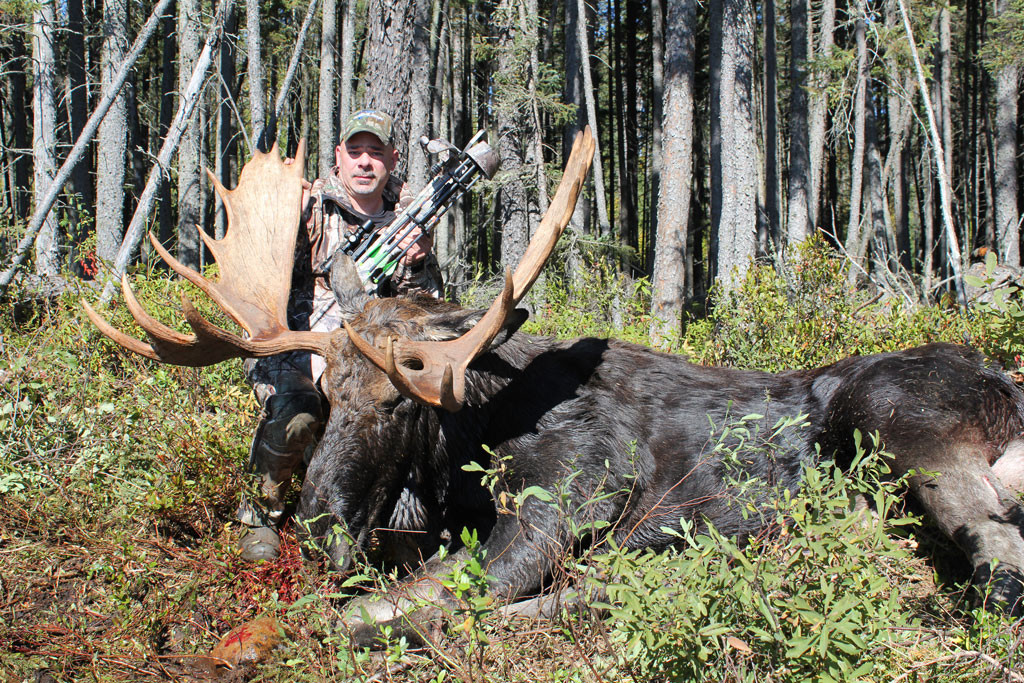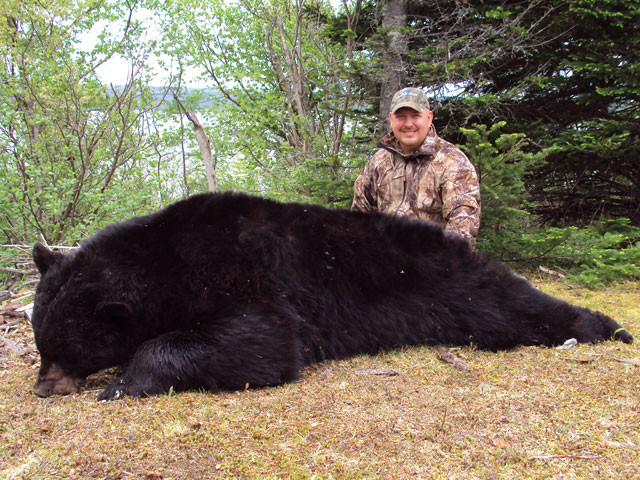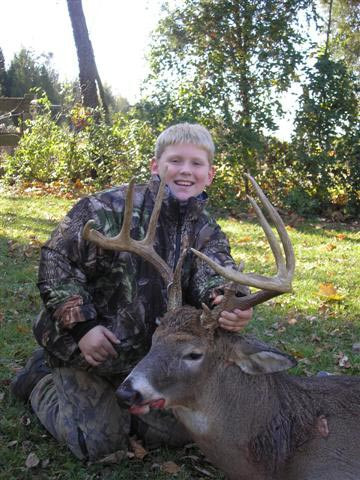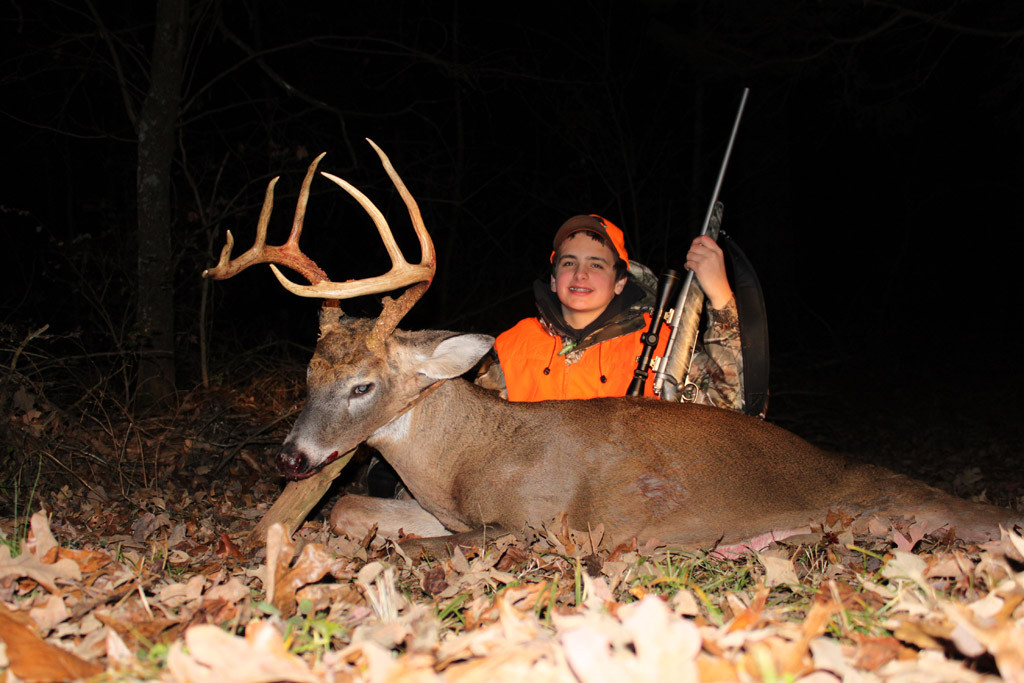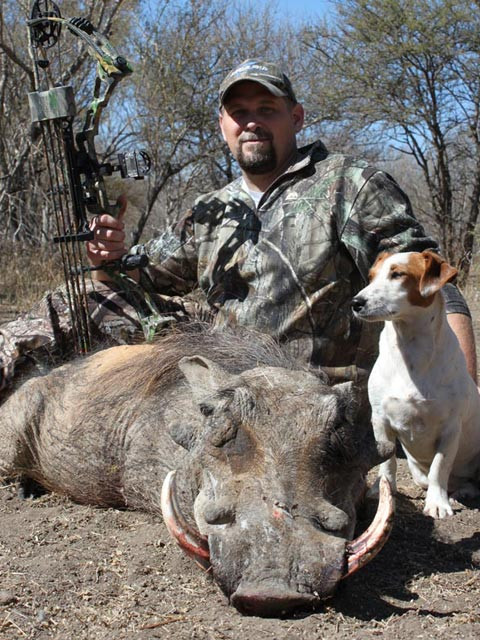While digging through some old filing cabinets at the Woods Wise office, Jerry came across this article he wrote for Buckmasters Magazine way back in August of 1989! After reading through it again he realized some basic truths never change. Hopefully this will help your calling success this fall.
Let's check your basic deer calling knowledge.
TRUE or FALSE: Bucks naturally want to be with other bucks during the rut.
TRUE or FALSE: Does don't grunt, they bleat and it's only the bucks that grunt.
TRUE or FALSE: Bucks can only be called during the fall and especially only during the rut.
TRUE or FALSE: The purpose of the tending grunt is to call other bucks.
TRUE or FALSE: Calling often and loudly will increase the number of deer you will see.
TRUE or FALSE: Call only when you see deer.
TRUE or FALSE: Fawn calls or bleats are good for calling estrous does.
TRUE or FALSE: Rattling won't work in areas with lots of does.
TRUE or FALSE: The best way to call a buck is to sound like another buck.
TRUE or FALSE: The deeper the tone and louder the grunt, the bigger the buck you will call up.
TRUE or FALSE: The only purpose of the snort is to warn other deer of danger.
TRUE or FALSE: The grunt is the only deer call sound that calls bucks.
BONUS 5-POINT QUESTION:
TRUE or FALSE: Bucks prefer to go to aggressive buck grunting and/or antler rattling rather than the soft calling of does if given a choice.
Though several of these questions could be answered "sometimes," the best answer to ALL of them is FALSE! I know you've read or heard otherwise with regards to some of these questions, but that's the point I want to make. Answering true to any of the above questions may be limiting or reducing your success with calling deer. Open your mind.
Let your common sense go to work. Think of every question base on what you know is true about deer and other animals, including people. For example, would you rather fight or take a young lady out on a date? Do women share a common language with men? What is the rut all about? Bucks meeting bucks, or, bucks meeting does? Why do bucks fight? To protect does or because there is a lack of does? Do deer stop "talking" to each other just because the rut is over? Is aggression the only aspect of deer behavior or are deer socially and sexually motivated? Don't let the half-baked ideas of the sudden flood of deer calling "experts" hold you back. Many of these experts have less experience than you in many cases. Go back and re-read the questions and you'll see what I mean.
I was lucky. I started calling deer now 45 years ago when there were no experts or even any basic information to get the way of my thinking. I was shown deer calling by my cousins in California for calling blacktail and mule deer back in 1964. I started learning about calling whitetail that same year, reasoning that if I could call blacktail I could call whitetail. I started with a clean slate and no bad habits to unlearn. Making mistakes and learning from them was my first teacher. Listening, watching, and imitating the sounds I heard deer make expanded my early successes. Researching in the library and later hunting with and having wildlife biologists as close personal friends to work with helped form techniques that were based on scientific facts, not theories.
First, let's discuss the violent or aggressive side of deer calling, since this is the one most people have gotten started with. Then we'll get to the good part. The part that will really open your eyes, the S-E-X or social part. It's my favorite way to call deer not only before, during and after the rut, but year round. Yes, deer are very callable year round. But, I'm getting ahead of myself.
If you have been using one of these loud, deep toned buck grunters, you have been using aggressive calling whether you knew it or not. If the call is loud, it's aggressive. What do I mean by loud? The first question I ask my seminar audiences is how many of you have heard a deer grunt? Of those who raise their hands I ask, "How many could have heard that grunt at a distance greater than 40 or 50 yards?" Almost no one keeps their hand raised. Of those that do, most report aggressive behavior associated with the call (chasing or fighting). Four important points: One, loud aggressive calling is not as common as soft calling. Two, it's associated with aggression. Three, it's associated with bot buck and doe behavior. And four, there must be a reason for another deer to respond to aggressive behavior, otherwise they are likely to move away from this behavior - no matter how large and dominate the threatened deer may be.
Aggressive calling, like rattling, works best in a typical deer herd just prior to the onset of the peak BREEDING period, a time that I define as the peak of rut. The reason the bucks respond well at this time is a LACK of available does. Bucks are eager for the rut to get under way and are quick to defend their right to BREED and not in defense of territory or in defense of does. In a typical herd where does outnumber bucks, this condition will exist until just a few available does come into estrous. The most aggressive, no matter what dominance status, will hook up with these first does and aggression will decline. This is why your aggressive buck calling declines in effectiveness as the breeding gets underway and actually begins to repel deer in the post rut period. There is no longer reason to respond to aggression.
As far as proper technique, I prefer to sound like a young buck when calling aggressively. By sounding like a young buck, I am less likely to have bucks circling down-wind and am more likely to have big bucks charge directly at me from wherever they are. The reason is simple: dominate bucks will tend to "rush" or "bluff" subdominants. They like to put them in their place. But even the biggest buck is likely to circle the calls of a big, deep sounding buck before approaching.
Unlike the advice of most "pros," I don't use the tending grunt to challenge other bucks. The purpose of the tending grunt is to call does to the buck. It's a trick that works from time to time, but you are more likely to call estrous does during the breeding period than bucks. I prefer to use short and long, LOUD grunts in random patterns of two to five calls with ten minute pauses between each series to allow deer time to work in to the calls. I tend to only use these techniques the two weeks or so leading up to the peak of rut or breeding. This is the same time that I employ aggressive rattling combined with snorts and sniff-wheezes along with long, aggregated grunting. I usually begin with long and short random grunts, wait ten minutes, give random grunts again and wait a couple minutes, then snort and give a couple of long aggregated grunts, sniff-snort and begin to rattle.
One word about rattling. Again, since I didn't have a bunch of experts to teach me "proper" techniques, I didn't do anything except what I saw and heard the deer do. No two deer fight the same way. No two fights sound alike because deer all have different antlers and use them differently. They don't fight according to a specific pattern for a specified period of time according to a written set of rules. When they are really fighting, it's a street fight and them that fights dirty, win! Fights don't have to start with a bang, go a certain time and end with an antler "brake," whatever that is. Go freestyle. Don't sound exactly the same twice. Don't sound like me, and, don't sound like the experts. Sound like two bucks trying to kill each other. Some fights last five seconds, others last 20 minutes or more. The trick is not to be caught with the antlers in hand when he shows up. Most big bucks are usually slow to come to aggressive rattling perhaps because they know they are the big boy in that area, or they are just naturally more cautious, or they have matured to the point that they know it's better to be a lover than a fighter. Which brings us to the good part... S-E-X.
It has somehow gotten into everyone's head that the best and only way to call a buck is to sound like another buck. In fact, there seems to be a race on to see who can sound like the biggest, baddest buck in the woods. I think I made my point about sounding too big and bad. You'll have deer leaving or circling your area, including Mr. Big. But here come the questions again. If you give an aggressive buck a choice of going to a buck fight or going to a doe that's calling "come here," or "where is everybody," or "I need me a lover boy" where do you think he's going to go?
The voice of the doe is the sweetest sound that a buck can hear. The bucks spend the ENTIRE fall from late summer until winter looking for and listening for does. The breeding is actually taking place to some degree throughout this period and the bucks are eager to respond to does anytime! Deer of all ages and of both sexes have no reason to be afraid of approaching a doe any time throughout the year as long as the calls are SOFT and social. Loud calling even by does is aggressive.
Remember this very important point about social non-aggressive calling: you should practice giving these calls especially in the voice of a doe to be heard BY THE HUMAN EAR AT A DISTANCE OF NO GREATER THAN 50 YARDS. Deer have super hearing! People wrongly assume that deer calling needs to be loud to be heard by other deer. By increasing the volume you change the message from friendly to aggressive. If deer called as loud as most calls and callers produce the sound, you would hear deer all the time. But deer ARE calling to each other regularly, we just don't hear them whispering back and forth.
Now another important point: How do you produce the calls of a doe? Simply. Buck voices are deepest, doe voices are medium toned, and fawn voices are highest. Just like men, women and children. Pitch is the key. The doe grunt was the hardest for me to reproduce. When I tried to produce it with a reed, the reed had to vibrate so fast that it produced a fawn bleat at the tone pitch of the doe. The only way I could get the doe grunt in the proper pitch was with a friction grunt call. Reeds are best suited to produce the bleats and the deep grunts of a buck.
The best way I can illustrate the importance of the does voice is to compare it to turkey hunting. In the spring, turkey hunters go to the woods and call like the hen to call the gobblers. They could sound like a gobbler, but conditions have to be just right for it to work. That condition is a lack of hens which creates aggression. Sound familiar? Turkey hunters also know they get more consistent results by sounding like a hen in the non-mating fall period. Elk calling first became popular with bugling, but today everyone is concerned with cow calling. Moose hunting is also moving to cow calling. Now that I've let the cat out of the bag, watch all the "experts" and calling pros start making the announcement that they too have been sounding like does for years.
As far as what to sound like and what to say when you sound like a doe, I could try to go over the thirty-some sounds that I am aware of, but I won't. Remember first that deer make three basic sounds: They snort, which are basically danger sounds, they bleat - which are stress or distress sounds - and they grunt, which are basically sounds that range from social to aggressive depending on how they are given. How each sound is given (long, short, loud, soft or in various combinations) help determine the actual meaning and are often combined with body language to underscore the meaning further. Remember, how something is said is important.
The ABC's of Calling
The key to all season calling success is to remember "A-B-C." This stands for soft doe calls that are used year-round to keep the group together. The "A" stands for "Attention Grunt," the "B" is for "Bleat," and the "C" is for "Contact Calls."
A - Attention Grunt
My favorite three doe type calls are random, soft singular attention grunts, repeated soft bleats and random long bleats. The soft random doe grunts are referred to by biologists as maternal grunts and are the first sounds that the fawn learns from its mother. She uses these grunts to call the fawn to her to nurse and to keep the fawns with her. The fawn becomes imprinted with the fact that a singular or random SOFT grunts mean "come here." What better call could a hunter use than a call that sends this message? You can imagine what effect this message has on bucks with romance on their mind!
I like to "broadcast call" when I don't see deer about every 10 minutes using two to four randomly spaced singular doe grunts. Each soft grunt is about 1/4 second long and spaced 5 to 15 seconds apart in no particular pattern. If you see deer and they react to your calls, stop calling. No matter how slow they are coming, don't call. Make them hunt you. Don't let them pinpoint you by calling. Only call again if they lose interest, are looking behind themselves, or are behind an obstruction. It's a good idea to cast you call away from the approaching deer to help fool them on the distance and location of the calling. These tips are true of all deer calling.
B - Bleats of Does
A doe call that I like even more than the doe grunt as the rut approaches is the doe bleat. Adult doe bleats are raspy and medium deep in tone and sound more like a young goat. Don't confuse doe bleats with the higher-pitched bleats of fawns. Bucks don't raise fawns and don't care about fawn bleating, but they DO care about does bleating and I'll tell you why.
When does are in estrous, they bleat. Whether they do it to attract bucks to them or they do it because they are stressed and/or distressed due to their estrous condition doesn't really matter. The point is it attracts rutting bucks.
The pattern I use is 3 to 10 random bleats spaced a couple of seconds apart. If I see deer react to the calls I stop. If "broadcast calling," I'll call alternating with soft doe grunts, a series of mature doe bleats, wait 5 or 10 minutes, an repeat the soft doe grunts throughout the day from my stand. Note too that mature doe bleats and grunts very often calm down spooky deer, or will halt deer as they turn to run.
C - The Contact Call
One last favorite call of mine is the "contact call" or lost call that deer give when they are lost or separated. Deer can be lost or separated anytime throughout the year. These lost calls, especially when given by does, invite both bucks and does to come to the calling deer. It says "Where is everyone? I'm lost. Come to me! Now!"
It's a long bleat lasting about 3/4 one second. The more stressed the deer, the more the pitch rises and falls at the mid-point of the call. This too is a great "broadcast call" whether you see deer or not. I like to give two contact bleats, pause 20 seconds, and give one more.
An easy way to remember the contact call pattern is to remember "Ma-Mah." That's exactly why our newest doe call is call a Super Hot "Ma-Mah" Plus Breeding Bellow. It brings bucks running!
One last advantage worth mentioning about doe calls versus buck calls: when bucks respond to aggressive calling and rattling, they are wound up like a coil spring about to explode. One false move and they're off. When deer, either bucks or does, respond to doe calls they are eager but relaxed with their guard down. After all, what harm can a doe be, right? Also remember that all bucks are seeking does throughout the fall. Doe calls produce from late summer to winter and beyond. My favorite advice to hunters has always been, "When in doubt about whether you should use aggressive buck calling and rattling or doe calling and sparring, always use the doe and sparring stuff."
Like the underlying motivations of all human and animal behavior, when it comes to deer calling it's all about sex and violence. And I like to employ both techniques when the time is right. But if you want to be successful throughout the entire season, just rember "A-B-C." Attention Grunt, Bleat, and Contact Call.
Good Hunting
© 1989-2011, Jerry Peterson. All rights reserved, reprinted with permission
